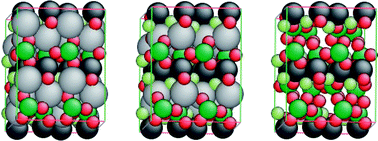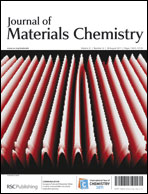Ab initio study of lithium transition metal fluorophosphate cathodes for rechargeable batteries
Abstract
Density functional theory (DFT) calculations using plane-wave methods were performed for Li2TMPO4F, LiTMPO4F, and TMPO4F (TM = V, Mn, Fe, Co, Ni) to address their feasibility as high-voltage cathode materials (>3.5 V relative to Li metal) for Li ion batteries. We computed their structures, average open circuit voltages, and thermal stabilities for step-wise lithiation/delithation (discharge/charge) reactions. The calculations suggest that associated unit cell volume changes are sufficiently small on average that they should not be a significant detriment to the mechanical stability of the cathode. In the nickel case, the calculated volume change deviates from the series by increasing during the first delithiation step. Furthermore, the volume increases for all these materials during the second delithiation step. The relative volume expansion in the series during delithiation appears related to the degree of


 Please wait while we load your content...
Please wait while we load your content...